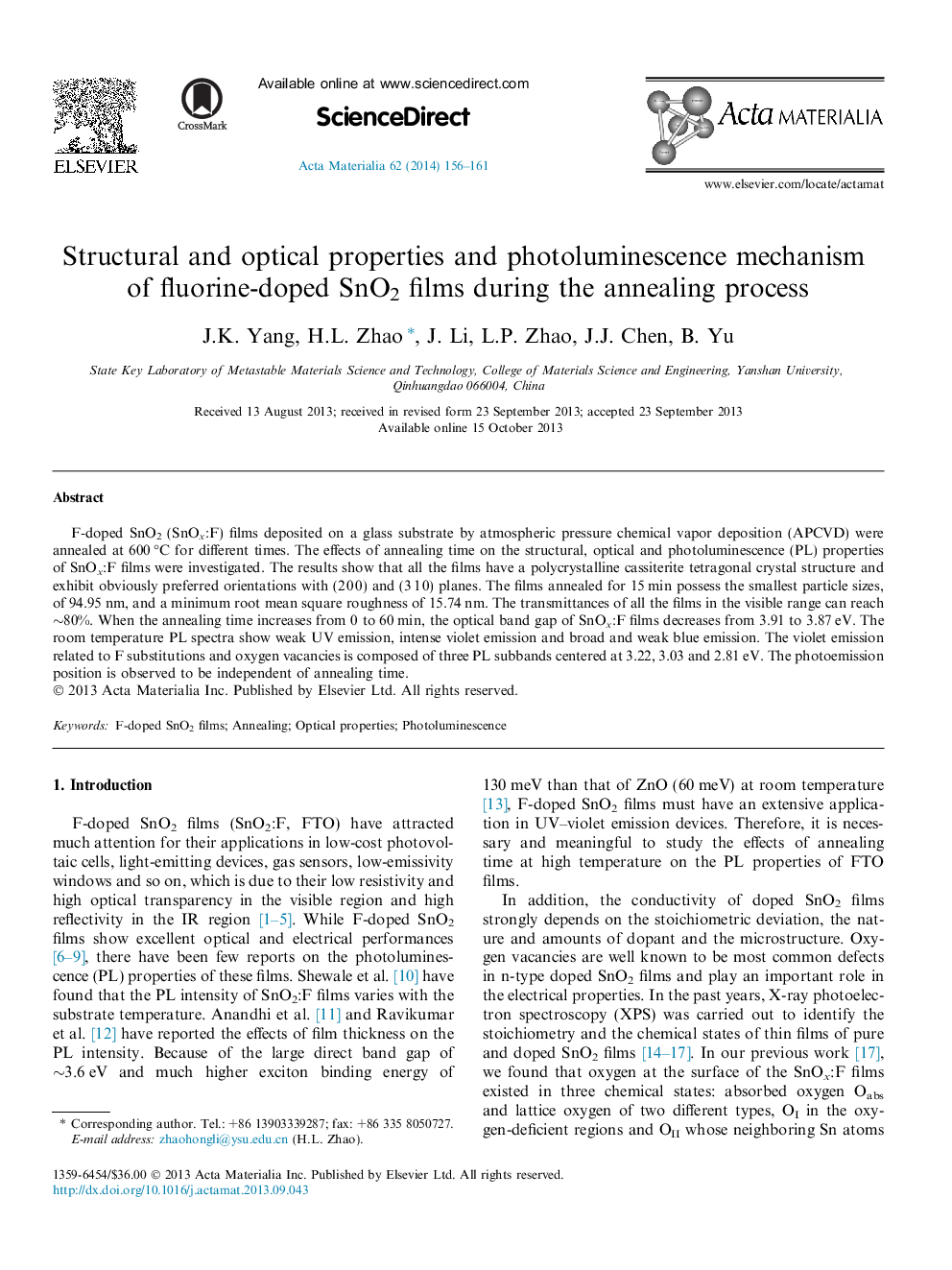| کد مقاله | کد نشریه | سال انتشار | مقاله انگلیسی | نسخه تمام متن |
|---|---|---|---|---|
| 1445970 | 1509614 | 2014 | 6 صفحه PDF | دانلود رایگان |

F-doped SnO2 (SnOx:F) films deposited on a glass substrate by atmospheric pressure chemical vapor deposition (APCVD) were annealed at 600 °C for different times. The effects of annealing time on the structural, optical and photoluminescence (PL) properties of SnOx:F films were investigated. The results show that all the films have a polycrystalline cassiterite tetragonal crystal structure and exhibit obviously preferred orientations with (2 0 0) and (3 1 0) planes. The films annealed for 15 min possess the smallest particle sizes, of 94.95 nm, and a minimum root mean square roughness of 15.74 nm. The transmittances of all the films in the visible range can reach ∼80%. When the annealing time increases from 0 to 60 min, the optical band gap of SnOx:F films decreases from 3.91 to 3.87 eV. The room temperature PL spectra show weak UV emission, intense violet emission and broad and weak blue emission. The violet emission related to F substitutions and oxygen vacancies is composed of three PL subbands centered at 3.22, 3.03 and 2.81 eV. The photoemission position is observed to be independent of annealing time.
The room temperature PL spectra show weak UV emission, intense violet emission and broad and weak blue emission. The violet emission related with F substitutions and oxygen vacancies is composed of three PL subbands centered at 385.20 nm (3.22 eV, P2), 409.33 nm (3.03 eV, P3) and 441.69 nm (2.81 eV, P4). According to the PL emission, the energy level of F substitutions and VO donor levels are located near the conduction band, while the VO energy level is relatively close to the valence band.Figure optionsDownload high-quality image (132 K)Download as PowerPoint slide
Journal: Acta Materialia - Volume 62, January 2014, Pages 156–161